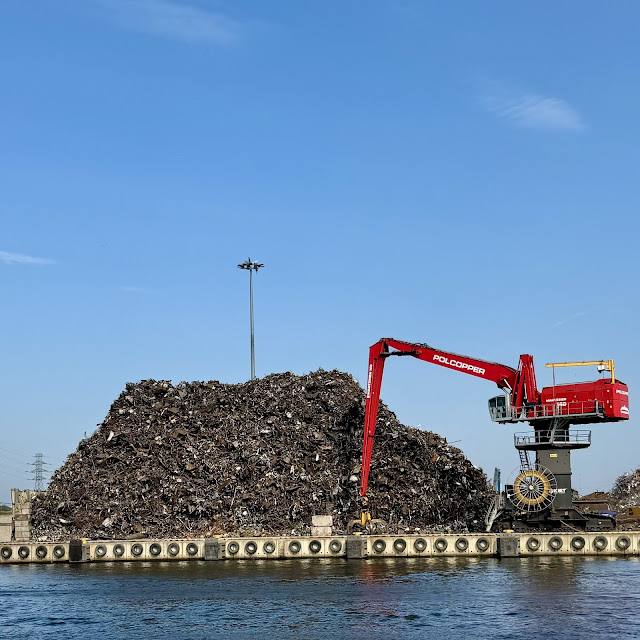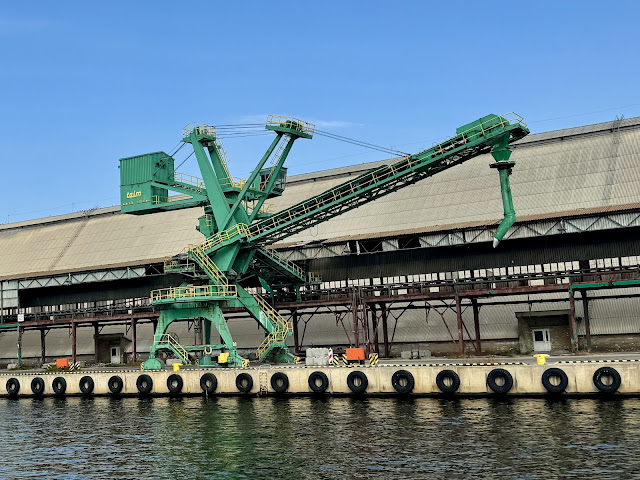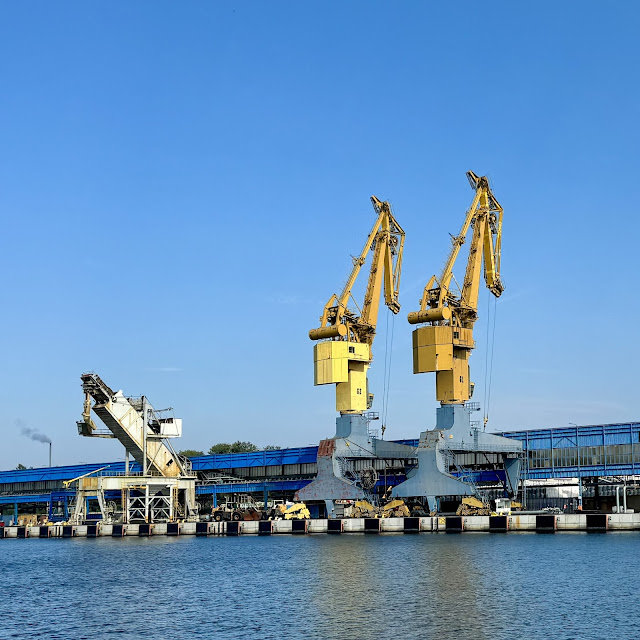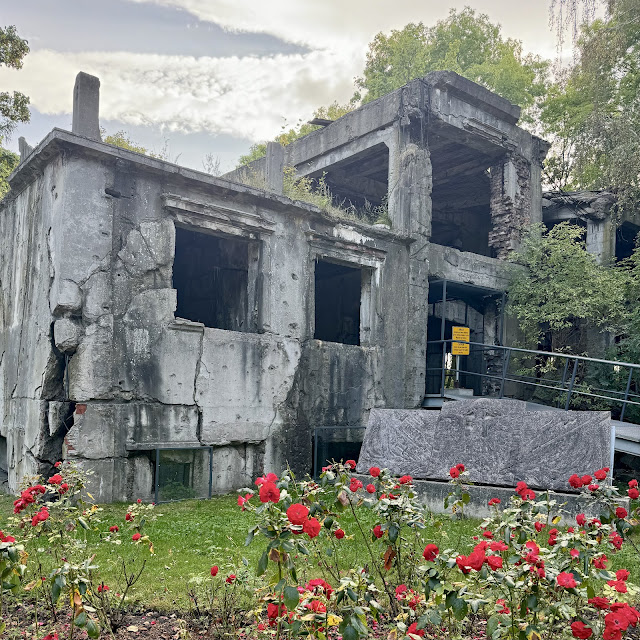When Florian asked if was going to Westerplatte, I was unaware of its historical significance, but our well-timed visit to the Museum of the Second World War fixed that.
Christine had suggested we take a boat ride when we visited Gdańsk given its proximity to the Baltic Sea. The 45-minute ferry ride to the peninsula where the Germans eventually won the first battle of WWII checked that off our sightseeing list, even if the tourist commentary was entirely in Polish.
The boat took us through the city's harbour channel, past cranes so iconic that they have come to symbolize the city.
Just FYI: there are some GREAT graphic designers at work in Poland!
The often colorful industrialization of the channel provided insight into the city's critical leadership role in the labor movement that helped bring an end to Soviet rule. A visit to the Monument of the Fallen Workers 1970 and the European Solidarity Center would school us in that history before we left.
After exiting the ferry, we crossed the narrow Westerplatte peninsula to the Baltic. During the early part of the 20th century, the area served mostly recreational purposes but that changed when the League of Nations allowed the newly constituted Polish government to erect a munitions depot within the "Free City of Danzig." The mostly German population, including the police force, considered it hostile territory. By the summer of 1939, a German battleship could be glimpsed in these waters.
On September 1, 1939 Hitler ordered the SMS Schleswig-Holstein to fire on Westerplatte, expecting little resistance from the vastly outnumbered garrison. But an estimated 200 Polish soldiers, led by Major Henryk Sucharski fiercely defended the depot. The battle lasted a week, tying up more than 3,000 German soldiers who were supposed to be invading the rest of the country, before the Poles finally waved the white flag.
Westerplatte assumed immediate symbolic significance, particularly for members of the resistance, but some historians have questioned the reality behind the fog of war. Although the body of Major Sucharski--who survived German imprisonment--was exhumed from a Polish military cemetery in Italy to be buried with honors on the peninsula along with his fallen comrades, some contemporary accounts of the battle that emerged assert the shellshocked major wanted to surrender on the second day of the conflict but was dissuaded from doing so by junior officers. In addition, the Germans insisted that four Polish fatalities--buried in a common grave--were deserters who had been shot by their own countrymen.
But none of this controversy is evident during a visit to Westerplatte where recent DNA analysis has identified the remains of soldiers who lost their lives defending Poland. An air raid by the Luftwaffe likely killed Corporal Bronislaw Perucki, a 24-year-old sharpshooter.
The nearby Monument to the Defenders of the Coast was built during the mid-1960s to resemble a bayonet stuck in the ground. Visitors who look closely at the inscriptions will notice that it commemorates not only Westerplatte, but other battles in which the Red Army defended what eventually became their territory from the Nazis, proving that Poland's tortured political history is never far from the surface. Vladimir Putin and Angela Merkel were among the foreign dignitaries who attended a ceremony to mark the 70th anniversary of World War II at Westerplatte in 2009, along with Polish Prime Minister Donald Tusk and Lech Wałęsa, Hitler himself had visited the peninsula two weeks after the German victory.
I knew what these distant words meant because I purchased a t-shirt with them earlier that day: NO MORE WAR.
More Poland
Gdansk:
Kraków:

















No comments:
Post a Comment